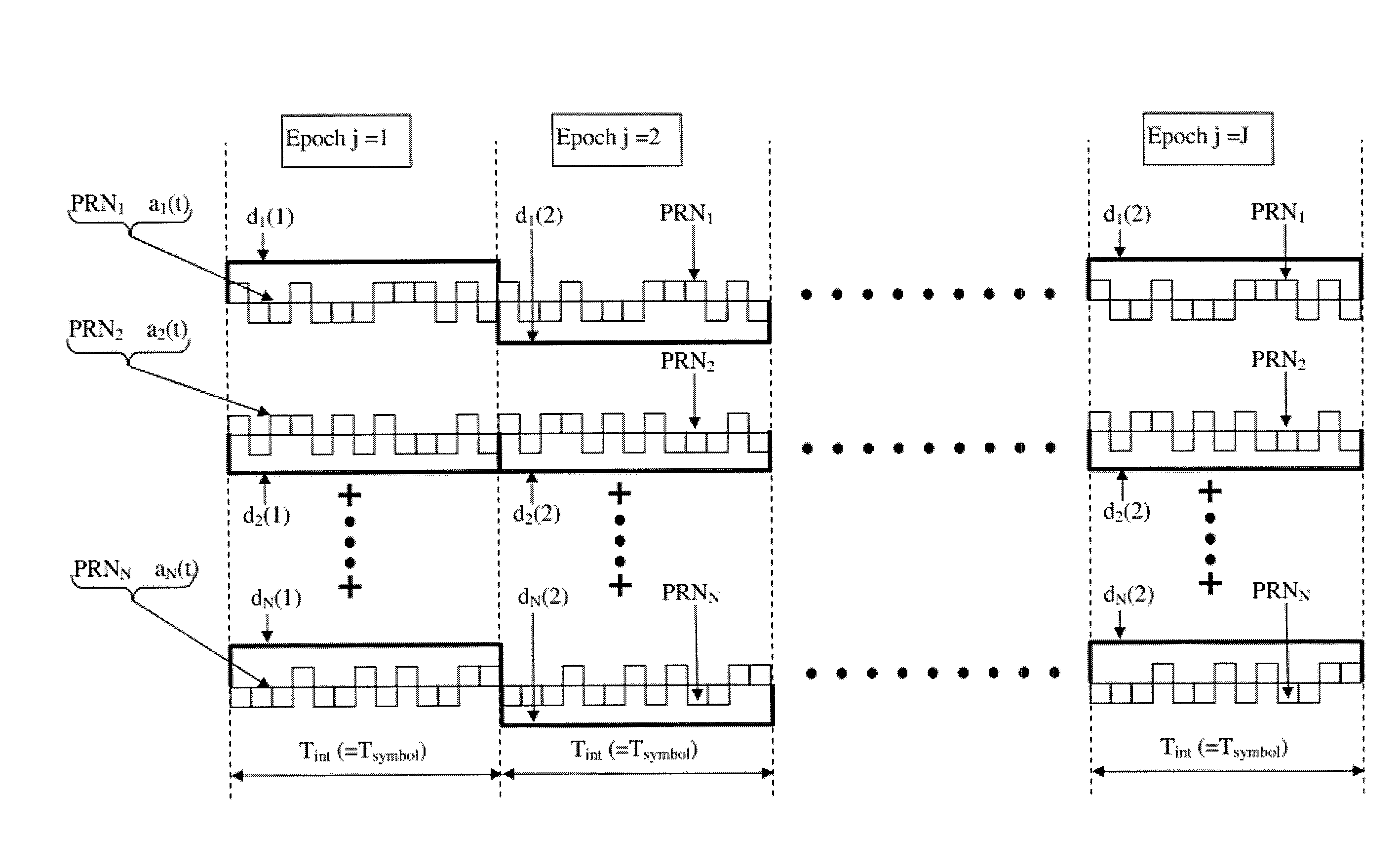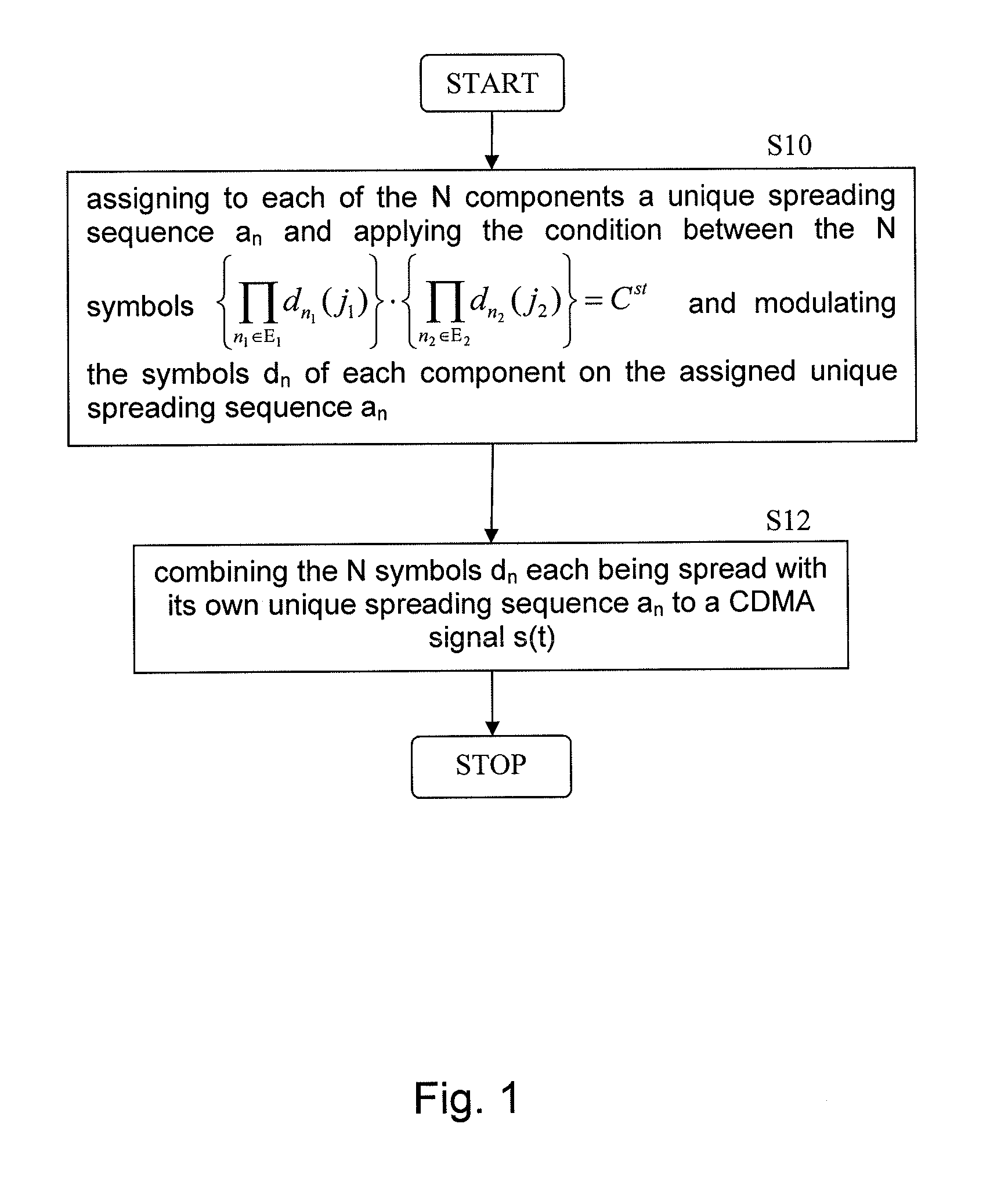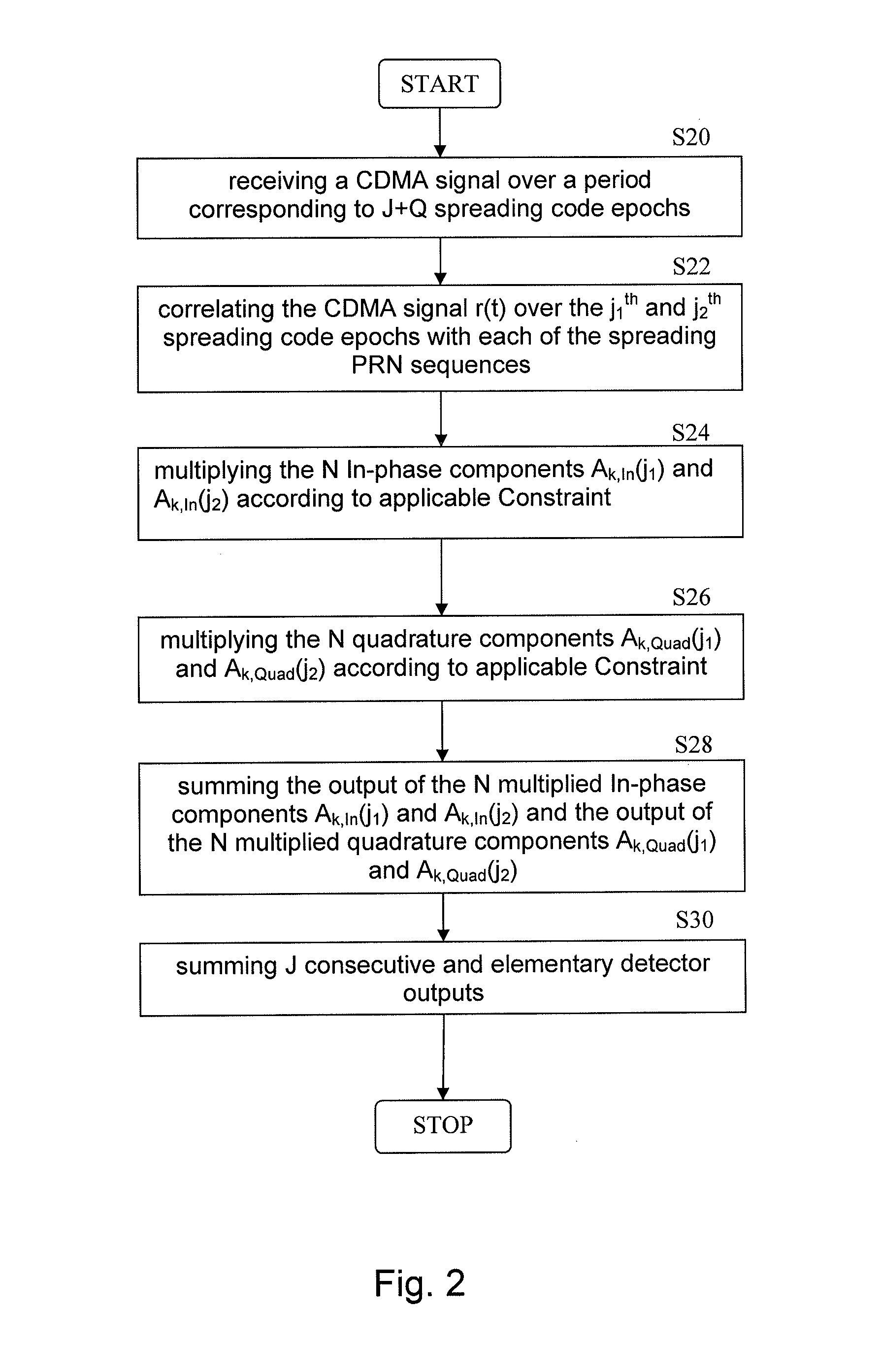Generating and Processing of CDMA Signals
a technology of cdma signal and generator, which is applied in the direction of code division multiplex, satellite radio beaconing, instruments, etc., can solve the problems of thermal noise that is usually incurred by the transmission channel, and achieve the effects of improving acquisition performance, reducing thermal noise effects, and improving performan
- Summary
- Abstract
- Description
- Claims
- Application Information
AI Technical Summary
Benefits of technology
Problems solved by technology
Method used
Image
Examples
case 1
[0103]Same noise contribution ñc(u) or ñs(u) in both integrals but two different spreading sequences an(u) and ak(u). Here the case of ñc(u) for both integrals is considered for illustration.
E{∫oTint∫oTintn~c(u)ak(u-Δτ)n~c(v)an(v-Δτ)uv}=∫oTint∫oTintak(v-τ)an(u-τ)E{n~c(v)n~c(u)}vu=∫oTint∫oTintak(v-Δτ)an(u-Δτ)No2δ(t-u)vu=No2∫oTint∫oTintak(v-Δτ)an(u-Δτ)δ(v-u)vu=No2∫oTintak(v-Δτ)an(v-Δτ)v=No2Rak,an(0)·Tint
If both spreading sequences an(u) and ak(u) are perfectly orthogonal, Rak,an(0)=0, the expectation of the product of the two previous integrals is zero.
case 2
[0104]Different noise contributions ñc(u) or ñs(u) in both integrals and same spreading sequences ak(u) equal to an(u).
E{∫oTint∫oTintn~c(u)an(u-Δτ)n~s(v)an(v-Δτ)uv}=∫oTint∫oTintan(v-τ)an(u-τ)E{n~c(v)n~s(u)}vu=0
Indeed, per definition the two in-phase and quadrature noise components are independent.
case 3
[0105]Different noise contributions ñc(u) or ñs(u) in both integrals and two different spreading sequences an(u) and ak(u). This case is simply the combinations of both previous cases, and consequently the expectation of the product of the two previous integrals is zero.
[0106]Case 4:
[0107]Same noise contributions ñc(u) or ñs(u) in both integrals and same spreading sequences ak(u) equal to an(u).
E{∫oTint∫oTintn~c(u)an(u-Δτ)n~c(v)an(v-Δτ)uv}=∫oTint∫oTintan(v-τ)an(u-τ)E{n~c(v)n~c(u)}vu=∫oTint∫oTintan(v-Δτ)an(u-Δτ)No2δ(v-u)vu=No2∫oTint∫oTintan(v-Δτ)an(u-Δτ)δ(v-u)vu}=No2∫oTintan(v-Δτ)an(v-Δτ)t=No2Ran,an(0)·Tint=No2·Tint
[0108]Indeed the auto-correlation of the sequence an(t), Ran,an(0) is 1.
[0109]Hence, it can be verified that over four cases of integral multiplications, 3 of them are zero due to either the code an(u) and ak(u), or the noise ñc(u) and ñs(u) orthogonality.
[0110]In the previous example, the product of only two integrals was considered. When considering the ΠN detector, N su...
PUM
 Login to View More
Login to View More Abstract
Description
Claims
Application Information
 Login to View More
Login to View More - R&D
- Intellectual Property
- Life Sciences
- Materials
- Tech Scout
- Unparalleled Data Quality
- Higher Quality Content
- 60% Fewer Hallucinations
Browse by: Latest US Patents, China's latest patents, Technical Efficacy Thesaurus, Application Domain, Technology Topic, Popular Technical Reports.
© 2025 PatSnap. All rights reserved.Legal|Privacy policy|Modern Slavery Act Transparency Statement|Sitemap|About US| Contact US: help@patsnap.com



